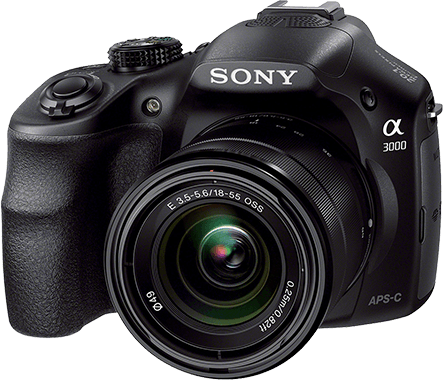Sony a3000 Specs and Scores

With a score of 49/100, the Sony a3000 mirrorless camera, launched in 2013, has some decent specifications for its time. Priced at $400, it measures 128 x 91 x 85mm and weighs 411g, or 0.91lbs. Although these specs were competitive in 2013, the camera market has evolved significantly since then. The Sony a3000’s specifications may not stand out in today’s market, but it still offers some value for those seeking an affordable and lightweight option.
Sony a3000 Overview and Optics
The Sony a3000’s optics score is 58/100. With 20.1 megapixels, the camera captures images at a decent quality level. The shooting speed of 2.5 frames per second is slower compared to many modern cameras. The camera has a CMOS sensor and a Bionz processor, contributing to a DXOMARK score of 78 for the sensor. The sensor size is APS-C, which is common in entry-level cameras.
The Sony E lens mount allows for a variety of lens options. However, the camera lacks image stabilization, which may result in shaky images without a tripod. The aspect ratio is 3:2, which is standard for most cameras.
Comparing the Sony a3000’s optics to modern cameras, it falls short in some aspects. The lack of image stabilization and a slower shooting speed are notable drawbacks. Nevertheless, the camera still provides acceptable image quality and a versatile lens mount for beginners.
Sony a3000 Video Performance
The Sony a3000 has a video score of 56 out of 100. This camera offers Full HD video resolution with maximum dimensions of 1920 x 1080 pixels. The highest video frame rate it can handle is 60fps. However, this camera does not have built-in time-lapse functionality.
In the current market, the video capabilities of the Sony a3000 are considered average. Competing cameras offer 4K video resolution and more advanced features. The lack of time-lapse functionality may discourage some users who require this feature for their projects.
The video performance of the Sony a3000 may be suitable for casual users or those on a budget, but it might not meet the demands of professionals or enthusiasts seeking cutting-edge video quality and features.
Sony a3000 Features and Benefits
The Sony a3000 received a feature score of 36 out of 100. Its screen size measures 3 inches with a resolution of 230,400 dots. Unfortunately, the camera does not have a touchscreen. However, it does have a flip screen, which can be useful for capturing images from different angles.
In today’s market, the absence of GPS and Bluetooth in the Sony a3000 might be considered drawbacks. On the other hand, the camera does come with WiFi connectivity, which allows users to transfer photos and videos effortlessly.
Comparing the Sony a3000’s features to other cameras in the market, it falls short in some aspects. Despite having a flip screen and WiFi connectivity, the lack of touchscreen, GPS, and Bluetooth place it behind some competitors. The feature score of 36 reflects these limitations, suggesting that potential buyers should consider their specific needs when evaluating this camera.
Sony a3000 Storage and Battery
The Sony a3000 scores 27/100 in the storage and battery department. This camera has only one memory card slot, supporting SD, SDHC, SDXC, and Memory Stick Pro Duo. The battery life lasts for 470 shots, using the NP-FW50 battery type. However, it does not offer USB charging.
In today’s market, the camera’s storage and battery specifications are less competitive. Many contemporary cameras offer more memory card slots and longer battery life. The absence of USB charging also limits convenience for users. Despite this, the Sony a3000 remains a viable option for casual photographers who do not require extended battery life or additional storage options.
